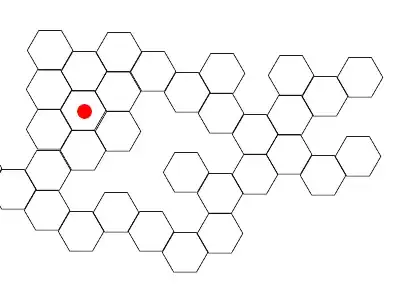I am currently developing a simple game in Unity.
I got a game board composed of hexagons. Let's say, the red dot is the player.
Now I want to show the user on which fields he can go, depending on the number he diced. The user should not be allowed to enter one hexagons multiple times in one move.
Is there any algorithm to solve this path problem? I've only found algorithms which asserted whether there is a connection between two nodes, but no algorithm to get all possible moves.
